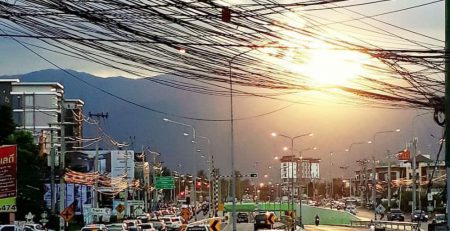BOTS: A CLEAR AND PRESENT DANGER
So … let’s talk about bots.
You’ve probably heard about them already … most likely connected to social media and the 2016 presidential election.
But, do you know what they are? Or what makes them so dangerous?
Let’s review:
What’s a bot?
A bot is an automated program that has been programmed to perform a specific task. By their nature, bots themselves are neutral. One of the things that makes them so useful is that they can be programmed to simulate human interaction. A common example of bots is the automated customer service that many websites offer. You log in, seek customer service, and a chat window opens. The person you end up talking to may, in fact, not be a person at all.
How do they work?
Bots are designed to automatically perform tasks that a human would normally perform. For example, you could pick up your phone, enter your search engine (we’ll use Google), and type in “What are bots?” Or, you could simply say, “Hey, Google … what are bots?” And your phone, thanks to the bot linked to your voice recognition software, would answer you. In many ways, bots simplify our lives. Regrettably, they increasingly also make things more complex and difficult.
Why should you care?
Ever been enraged when, after waiting a long time for ticket sales to open to your favorite event, the event sells out in mere minutes? In December 2016, President Barack Obama signed the “Better Online Ticket Sales Act,” which banned “the circumvention of control measures used by Internet ticket sellers to ensure equitable consumer access to tickets for certain events.” In other words, it banned people from using bots to scoop up huge numbers of tickets in order to resell them, usually at exorbitant rates, on secondary markets.
Unconvinced? In 2018, the Pew Research Center released a study showing that bots were making a disproportionate impact on social media. During a six-week period in the summer of 2017, the center examined 1.2 million tweets that shared URL links to determine how many of them where actually posted by bots, as opposed to people. Among the findings:
- Sixty-six percent of all tweeted links were posted by suspected bots, which suggests that links shared by bots are actually more common than links shared by humans.
- Sixty-six percent of links to sites dealing with news and current events were posted by suspected bots. Higher numbers were seen in the areas of adult content (90 percent), sports (76 percent), and commercial products (73 percent).
- Eighty-nine percent of tweeted links to news aggregation sites were posted by bots.
- The 500 most active bot accounts were responsible for 22 percent of the tweeted links to popular news and current events sites. On the human side of the equation, the 500 most active human users were responsible only an estimated six percent of those links.
In other words, social media, which was designed by humans for use by humans, has instead become the province of bots.
And then, of course, there’s always the chance that the information that you read and share on social media, the information that helps you decide how to vote, has been subtly influenced by bots designed to shift your thinking along a predetermined narrative.
In 2016, Scottie Nell Hughes, a conservative political commentator, told CNN anchor Anderson Cooper that “(the) only place that we’re hearing that Donald Trump honestly is losing is in the media or these polls. You’re not seeing it with the crowd rallies, you’re not seeing it on social media—where Donald Trump is two to three times more popular than Hillary Clinton on every social media platform.”
Trump himself touted his social media popularity during the campaign, saying during the first presidential debate that he had 30 million followers on Twitter and Facebook. That apparent popularity, in the eyes of a culture that translates “worth and fame” into support on social media, made Trump look even more like a winner among his followers.
However … what if those numbers were, in fact, a lie?
In 2016, an Oxford University study revealed that, between the first and second presidential debates, more than a third of pro-Trump tweets, and nearly a fifth of pro-Clinton tweets, came from bot-controlled accounts — a total of more than a million tweets.
The study also found:
- During the debates, the bot accounts created up to 27 percent of all Twitter traffic related to the election
- By the time of the election, 81 percent of the bot-controlled tweets involved some form of Trump messaging
- On Election Day, as Trump’s victory became apparent, traffic from automated pro-Trump accounts abruptly stopped.
What about today?
Today, the race for the White House has begun once again, with Trump facing a challenger in former Vice President Joe Biden.
And the bots, as you might expect, are at it again. This time, however, people and social media platforms are better armed, and better prepared to fight back.
- In November 2018, the FBI warned that “Americans should be aware that foreign actors—and Russia in particular—continue to try to influence public sentiment and voter perceptions through actions intended to sow discord. They can do this by spreading false information about political processes and candidates, lying about their own interference activities, disseminating propaganda on social media, and through other tactics.” The statement was a joint release with the Department of Homeland Security, the Department of Justice, and the Office of the Director of National Intelligence.
- In February 2019, a study showed that bots, including thousands based in Russia and Iran, were much more active during the 2018 midterm elections than previously thought. In nearly every state, more than a fifth of Twitter posts about the elections in the weeks before Election Day were posted by bots.
- In 2019, Twitter detected and removed more than 26,600 bot-controlled accounts. Granted, that sounds like a lot, until you consider that, at the time, the platform had more than 330 million active users. Still, for Twitter — which is known for its openness, as well as for its reluctance to set truth and authenticity as a rule for its accounts — it was a start. The company’s efforts, however, are like fighting the tide with a bucket; for every bot account that is deleted, many, many more are already being created. The platform has also begun flagging tweets by Trump that it says glorify violence or are factually inaccurate.
- In September 2019, a study by the University of Southern California’s Information Sciences Institute showed that “although social media service providers put increasing efforts to protect their platforms, malicious bot accounts continuously evolve to escape detection. In this work, we monitored the activity of almost 245 (thousand) accounts engaged in the Twitter political discussion during the last two U.S. voting events. We identified approximately 31 (thousand) bots. … We show that, in the 2018 midterms, bots (learned) to better mimic humans and avoid detection.”
- Because social media platforms have a global reach, they also have a global impact. In March, ProPublica revealed that, since August 2019, it had been tracking more than 10,000 Twitter accounts it suspected of being part of an influence campaign linked to the Chinese government. “Among those are the hacked accounts of users from around the world that now post propaganda and disinformation about the coronavirus outbreak, the Hong Kong protests and other topics of state interest,” the report said.
- In May, NortonLifeLock has begun offering BotSight, which it calls “a new tool to detect bots on Twitter in real-time” that will quantify “disinformation on Twitter, one tweet at a time.”
- On June 11, Twitter announced that it had closed down more than 170,000 accounts connected to China’s government. The accounts were designed to spread “geopolitical narratives favorable to the Communist Party of China,” by disseminating misinformation about the Hong Kong protests, COVID-19, and other issues.
What can you do?
You have the facts. Now, you need to decide what to do.
Yes, some bots, such as those used in customer service, exist to make our lives easier. However, it has been shown, time and again, that they also represent a tool that can be used to damage our democracy. In a nation that prides itself on “one person, one vote,” the fact that bots can actively tamper with the information people use to determine how they will vote is a clear and present danger to our nation’s security.
If you’re concerned that bots are a threat, then contact Twitter, Facebook, and the other social media platforms. Demand that they ban the use of bot-controlled accounts, and that they find ways to scrutinize accounts more closely in order to detect and delete such accounts. If they refuse to act, then contact your elected representative in the Senate and the House of Representatives. Demand that they pressure the social media platforms to act.
The integrity of our elections system goes beyond partisan politics. It is, in fact, the fabric that keeps this country together.
About the author
Melvin Bankhead III is the founder of MB Ink Media Relations, a boutique public relations firm based in Buffalo, New York. An experienced journalist, he is a former syndicated columnist for Cox Media Group, and a former editor at The Buffalo News.
Reference Materials
See active hyperlinks within the text, above.
Note from MTN Consulting
MTN Consulting is an industry analysis and research firm, not a company that typically comments on politics. We remain focused on companies who build and operate networks, and the vendors who supply them. That isn’t changing. However, we are going to dig into some of the technology issues related to these networks and networking platforms which are having (or will have) negative societal effects.
For context on this series, see our June 8, 2020 post, “It’s time for tech to take a stand.” Questions or comments can be directed to Matt Walker, MTN Consulting’s Chief Analyst (matt@www.mtn-c.com).
–
Image credit: iStock, by Getty Images











